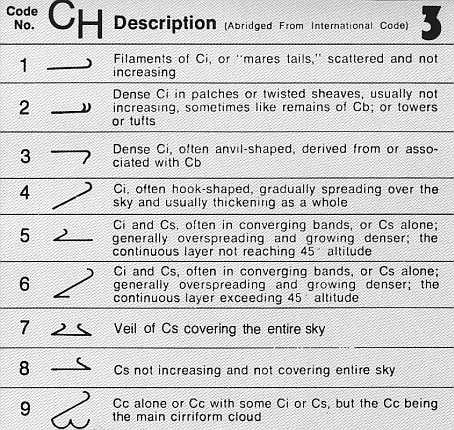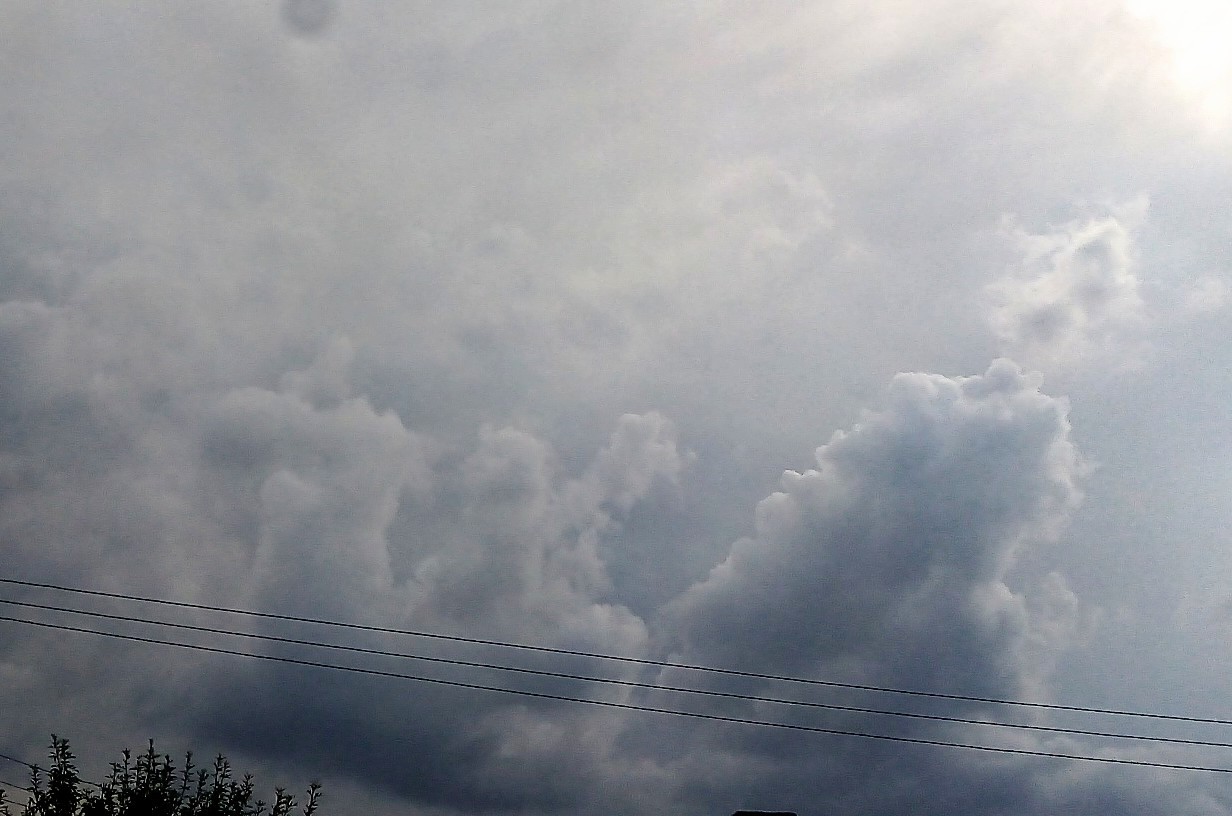|
Cirrocumulus Castellanus
Cirrocumulus castellanus or Cirrocumulus castellatus is a type of cirrocumulus cloud. ''Castellanus'' is from the Latin meaning "of a castle". These clouds appear as round turrets that are rising from either a lowered line or sheet of clouds. Cirrocumulus castellanus is an indicator of atmospheric instability at the level of the cloud. The clouds form when condensation occurs in the base cloud, causing latent heating to occur. This causes air to rise from the base cloud, and if the air ascends into conditionally unstable air, cirrocumulus castellanus will form. See also *List of cloud types The list of cloud types groups all genera as ''high'' (cirro-, cirrus), ''middle'' (alto-), ''multi-level'' (nimbo-, cumulo-, cumulus), and ''low'' (strato-, stratus). These groupings are determined by the altitude level or levels in the troposphe ... References External linksInternational Cloud Atlas – Cirrocumulus castellanus Cirrus Cumulus {{Cloud-stub ... [...More Info...] [...Related Items...] OR: [Wikipedia] [Google] [Baidu] |
Cirrocumulus Cloud
Cirrocumulus is one of the three main genus-types of high-altitude tropospheric clouds, the other two being cirrus and cirrostratus. They usually occur at an altitude of . Like lower-altitude cumuliform and stratocumuliform clouds, cirrocumulus signifies convection. Unlike other high-altitude tropospheric clouds like cirrus and cirrostratus, cirrocumulus includes a small amount of liquid water droplets, although these are in a supercooled state. Ice crystals are the predominant component, and typically, the ice crystals cause the supercooled water drops in the cloud to rapidly freeze, transforming the cirrocumulus into cirrostratus. This process can also produce precipitation in the form of a virga consisting of ice or snow. Thus, cirrocumulus clouds are usually short-lived., p.21 They usually only form as part of a short-lived transitional phase within an area of cirrus clouds and can also form briefly as a result of the breaking up of part of a cumulonimbus anvil. Properly, th ... [...More Info...] [...Related Items...] OR: [Wikipedia] [Google] [Baidu] |
Castellanus
A castellanus (or castellatus) (from latin ''castellanus'', castle) is a cloud that displays at least in its upper part cumuliform protuberances having the shape of turrets that give a battlement, crenellated aspect. Some of these turrets are higher than they are wide; they have a common base and seem to be arranged in a line. The castellanus characteristic is particularly obvious when the clouds are observed from the side (i.e., from a vantage point on a line perpendicular to the line of orientation). It is a cloud species attached to the cloud genus, cloud genera Cirrus castellanus, cirrus, Cirrocumulus castellanus, cirrocumulus, Altocumulus castellanus cloud, altocumulus and stratocumulus. Species of the clouds include cirrus castellanus, cirrocumulus castellanus, altocumulus castellanus and stratocumulus castellanus. Sometimes cumulus castellanus are referred to, but the type is not recognised by France's national meteorological service Météo-France, or by the American Mete ... [...More Info...] [...Related Items...] OR: [Wikipedia] [Google] [Baidu] |
Latin
Latin (, or , ) is a classical language belonging to the Italic branch of the Indo-European languages. Latin was originally a dialect spoken in the lower Tiber area (then known as Latium) around present-day Rome, but through the power of the Roman Republic it became the dominant language in the Italian region and subsequently throughout the Roman Empire. Even after the fall of Western Rome, Latin remained the common language of international communication, science, scholarship and academia in Europe until well into the 18th century, when other regional vernaculars (including its own descendants, the Romance languages) supplanted it in common academic and political usage, and it eventually became a dead language in the modern linguistic definition. Latin is a highly inflected language, with three distinct genders (masculine, feminine, and neuter), six or seven noun cases (nominative, accusative, genitive, dative, ablative, and vocative), five declensions, four verb conjuga ... [...More Info...] [...Related Items...] OR: [Wikipedia] [Google] [Baidu] |
Atmospheric Instability
Atmospheric instability is a condition where the Earth's atmosphere is generally considered to be unstable and as a result the weather is subjected to a high degree of variability through distance and time. Atmospheric stability is a measure of the atmosphere's tendency to discourage or deter vertical motion, and vertical motion is directly correlated to different types of weather systems and their severity. In unstable conditions, a lifted thing, such as a parcel of air will be warmer than the surrounding air at altitude. Because it is warmer, it is less dense and is prone to further ascent. In meteorology, instability can be described by various indices such as the Bulk Richardson Number, lifted index, K-index, convective available potential energy (CAPE), the Showalter, and the Vertical totals. These indices, as well as atmospheric instability itself, involve temperature changes through the troposphere with height, or lapse rate. Effects of atmospheric instability in mois ... [...More Info...] [...Related Items...] OR: [Wikipedia] [Google] [Baidu] |
Latent Heat
Latent heat (also known as latent energy or heat of transformation) is energy released or absorbed, by a body or a thermodynamic system, during a constant-temperature process — usually a first-order phase transition. Latent heat can be understood as energy in hidden form which is supplied or extracted to change the state of a substance without changing its temperature. Examples are latent heat of fusion and latent heat of vaporization involved in phase changes, i.e. a substance condensing or vaporizing at a specified temperature and pressure. The term was introduced around 1762 by Scottish chemist Joseph Black. It is derived from the Latin ''latere'' (''to lie hidden''). Black used the term in the context of calorimetry where a heat transfer caused a volume change in a body while its temperature was constant. In contrast to latent heat, sensible heat is energy transferred as heat, with a resultant temperature change in a body. Usage The terms ″sensible heat″ and ″laten ... [...More Info...] [...Related Items...] OR: [Wikipedia] [Google] [Baidu] |
List Of Cloud Types
The list of cloud types groups all genera as ''high'' (cirro-, cirrus), ''middle'' (alto-), ''multi-level'' (nimbo-, cumulo-, cumulus), and ''low'' (strato-, stratus). These groupings are determined by the altitude level or levels in the troposphere at which each of the various cloud types is normally found. Small cumulus are commonly grouped with the low clouds because they do not show significant vertical extent. Of the multi-level genus-types, those with the greatest convective activity are often grouped separately as ''towering vertical''. The genus types all have Latin names. The genera are also grouped into five physical forms. These are, in approximate ascending order of instability or convective activity: ''stratiform'' sheets; ''cirriform'' wisps and patches; ''stratocumuliform'' patches, rolls, and ripples; ''cumuliform'' heaps, and ''cumulonimbiform'' towers that often have complex structures. Most genera are divided into ''species'' with Latin names, some of which are c ... [...More Info...] [...Related Items...] OR: [Wikipedia] [Google] [Baidu] |
Cirrus
Cirrus may refer to: Science *Cirrus (biology), any of various thin, thread-like structures on the body of an animal *Cirrus (botany), a tendril *Infrared cirrus, in astronomy, filamentary structures seen in infrared light *Cirrus cloud, a type of cloud Aviation *Cirrus aero engines, a series of British aircraft engines manufactured by various companies from the 1920s to the 1950s *Cirrus Aircraft, an aircraft manufacturer in Duluth, Minnesota, USA *Cirrus Airlines, a defunct regional airline in Hallbergmoos, Germany *Cirrus (rocket), a German research rocket first launched in 1961 *Schempp-Hirth Cirrus, an Open-class sailplane *Schempp-Hirth Standard Cirrus, a Standard-class sailplane *Swing Cirrus, a German paraglider design Music *Cirrus (album), ''Cirrus'' (album), a 1974 release by Bobby Hutcherson *Cirrus (band), an American electronica duo *Cirrus (song), "Cirrus" (song), a 2013 instrumental by DJ Bonobo *Cirrus Minor (song), "Cirrus Minor" (song), a 1969 song by Pink Fl ... [...More Info...] [...Related Items...] OR: [Wikipedia] [Google] [Baidu] |



